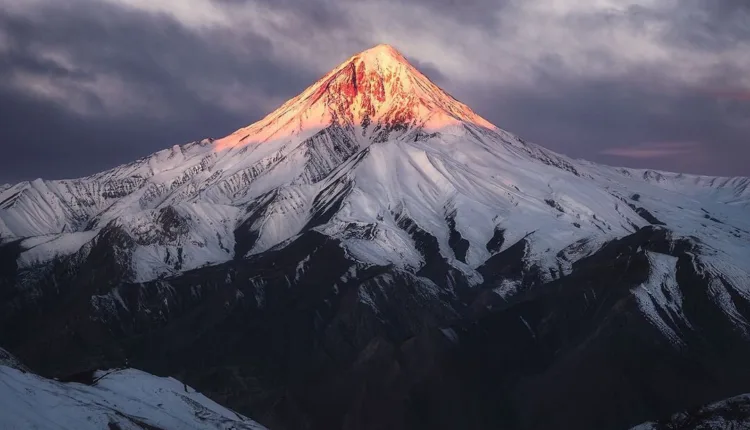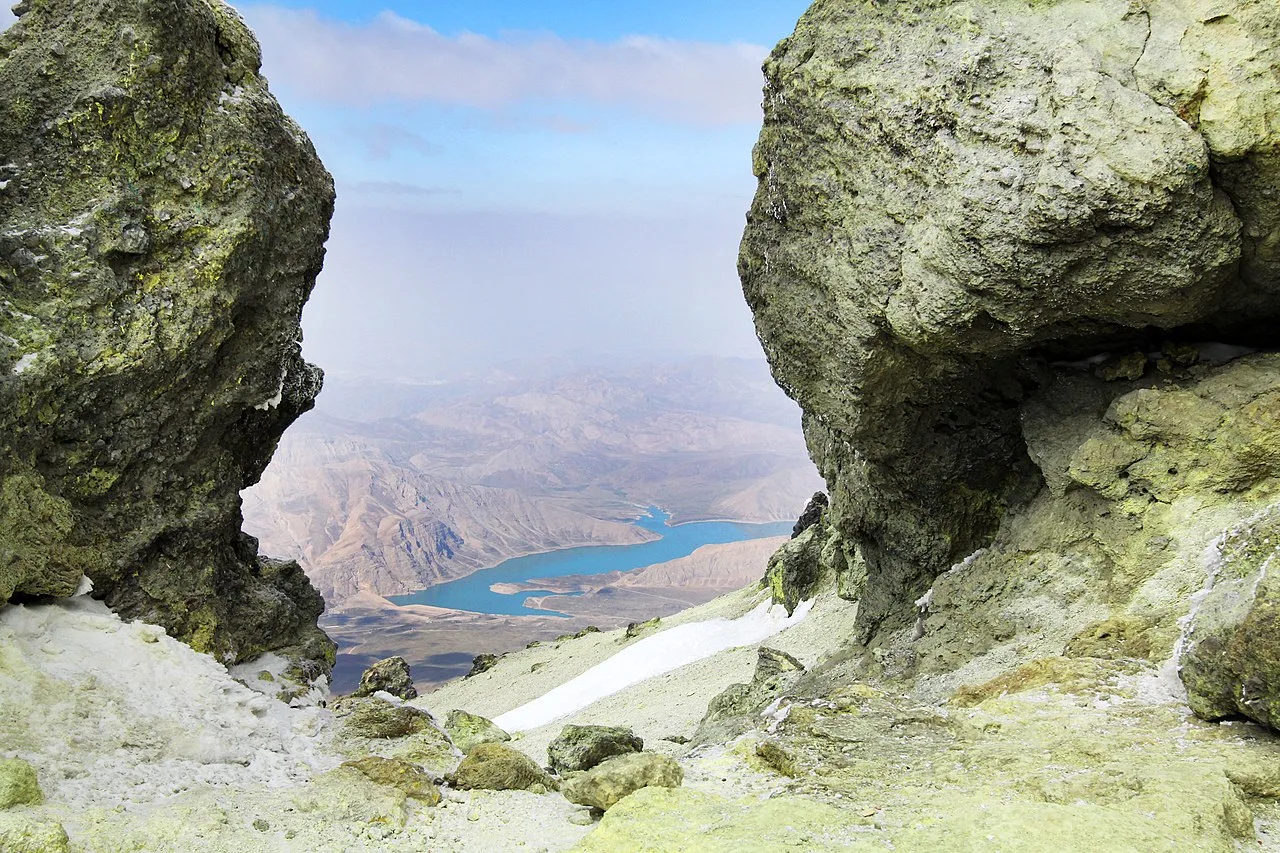The Majesty of Mount Damavand
Mount Damavand
Rising majestically to 5,671 meters (18,606 ft) above sea level, Mount Damavand is a stratovolcano located in northern Iran and an easy visit from Tehran.
As the highest peak in the country, it holds a special place in Persian mythology and folklore. Sometimes known as the ‘roof of Iran,’ Damavand’s iconic snow-capped cone dominates the landscape of the Alborz mountain range and you can spot it from many places in Tehran on a good day!
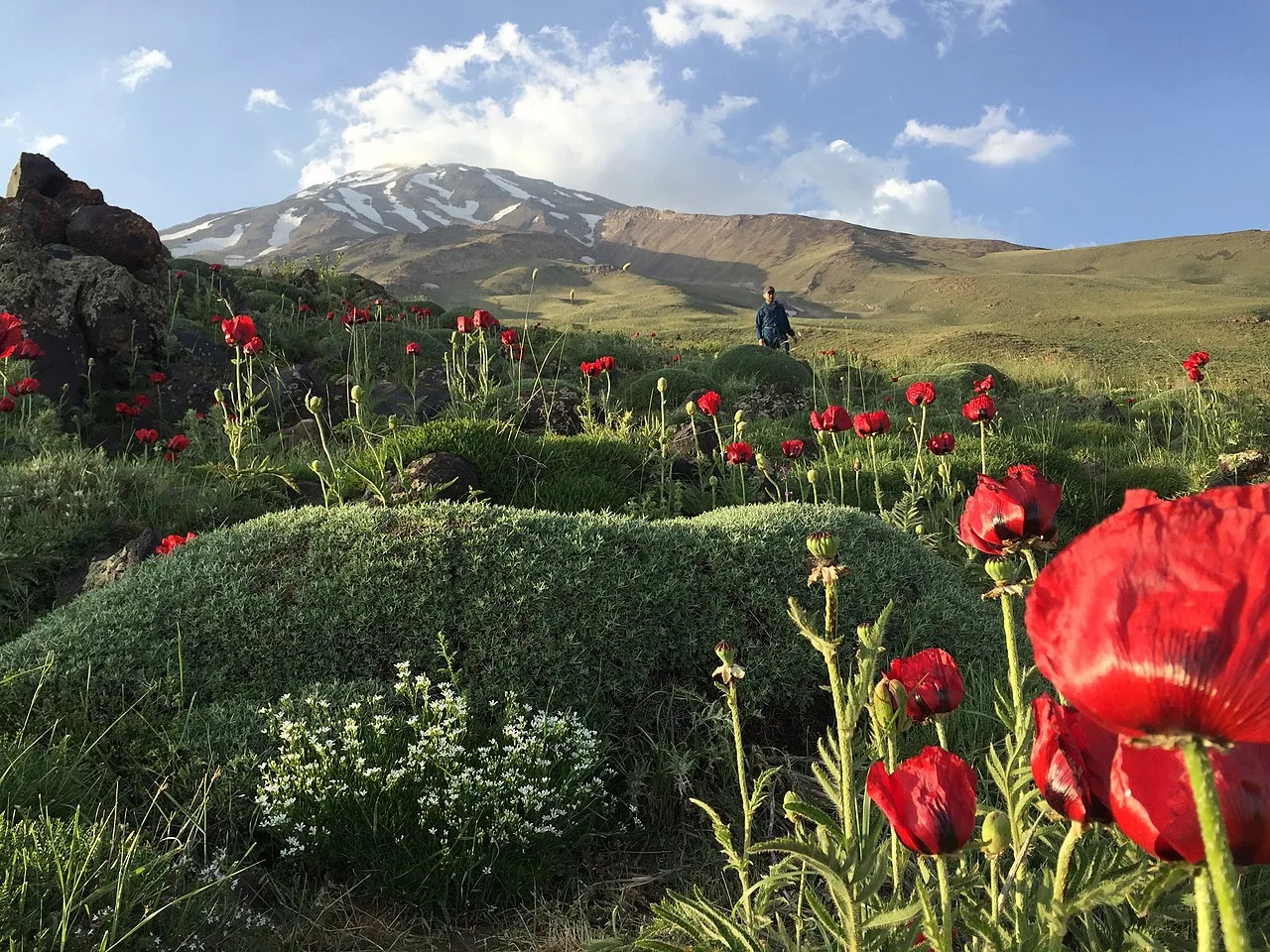
An Adventurous Hike
For adventurous hikers and mountaineers, climbing Damavand is a challenging yet rewarding experience. The hiking trails winding up the slopes offer stunning vistas of the surrounding landscape. The variations in terrain and climate as you ascend make for an interesting trek.
From humid lowland forests to alpine meadows dotted with wildflowers in summer, to windswept ridges and snowy slopes closer to the summit, Damavand showcases the diverse ecosystems found at different elevations.
The immense size and scale of the mountain are humbling yet inspiring. Gazing up at the summit from base camp, it’s hard to believe you’ll stand at the top in just a couple days! The dramatic elevation changes make the air noticeably thinner at higher elevations.
As you near the top, be prepared for freezing temperatures even in summer. From the summit on a clear day, the views stretch out over the volcanic peaks of the Alborz range, with views of the Caspian Sea shimmering in the distance.
Myths and Legends
According to Persian mythology, Damavand was the resting place of the three-headed dragon Azi Dahaka after being chained up by the hero Faridun. Another legend states that Damavand was built from the rubble left over after a massive earthquake flattened the world. These myths highlight the mystic aura surrounding this iconic peak.
Historically, inhabitants of the ancient city of Rey are believed to have erected a statue of the goddess Anahita atop Damavand’s summit. The mountain was also considered one of the ‘four pillars’ that held up the sky according to Zoroastrian beliefs. These associations with myths and ancient religions only add to the mountain’s symbolic status in Iranian culture.
Cultural Significance
For modern-day Iranians, Damavand represents the enduring strength and resilience of the nation. Its foundations are buried deep within the Earth’s crust, built up over millennia by countless eruptions of lava and ash. Just as this geological history shaped the proud form of the mountain we see today, so too has Iran’s long history and culture shaped its national identity.
Though an extinct volcano, fumaroles emitting hot gas and sulfurous steam can still be found near Damavand’s summit today. This serves as a reminder of the powerful geological forces still brewing beneath the surface. Damavand’s eternal snows feeding rivers and water resources also highlight its ongoing role in the environment.
Whether you’re an avid mountaineer seeking a new summit, a nature lover wishing to explore a fascinating ecosystem, or someone wanting to connect with the cultural and spiritual importance of the mountain, climbing Damavand is an unforgettable experience. As the highest point in Iran and the Middle East, ascending to Damavand’s lofty peak offers a sense of accomplishment and a new perspective on this ancient land.
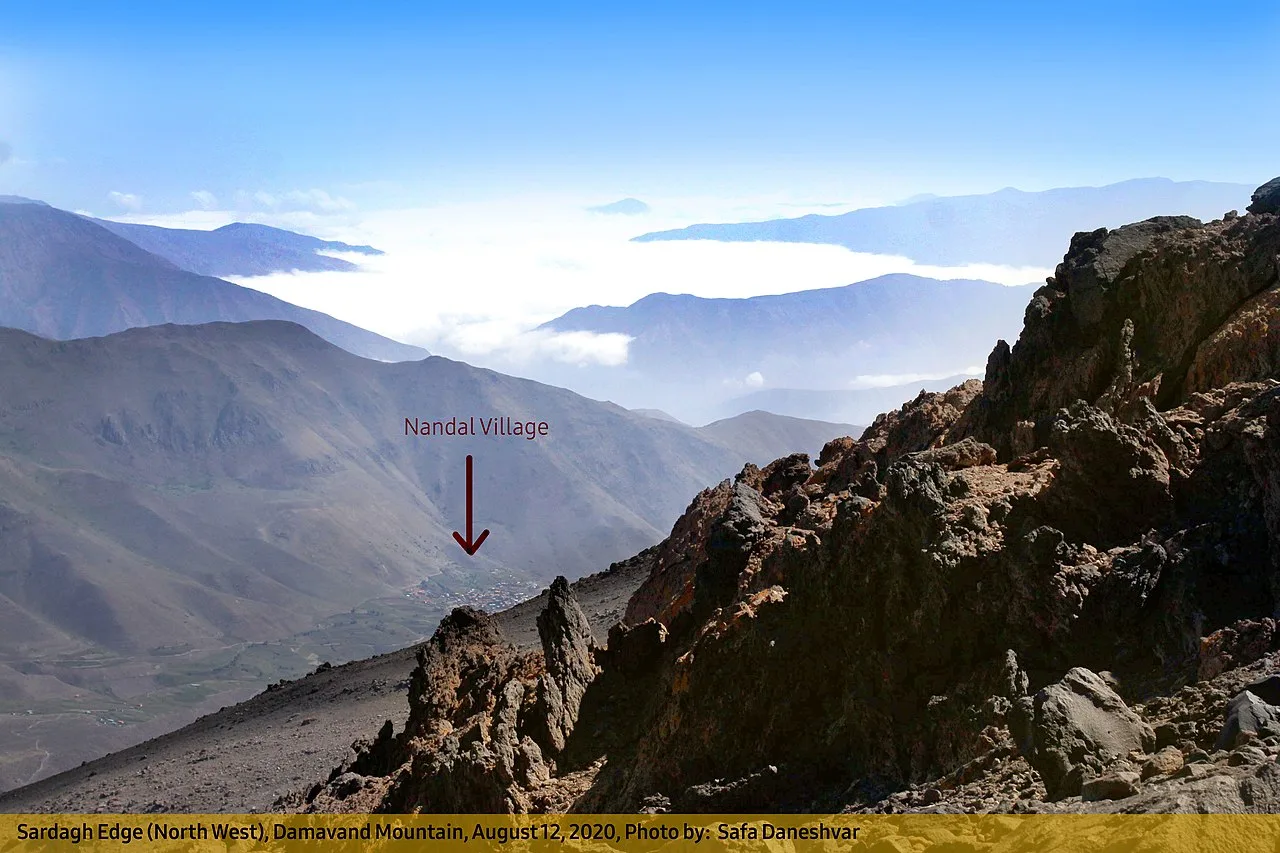
How to get to Damavand?
The most common starting point for climbing Mount Damavand is the southern route which begins at the village of Nandal, located about 65 km northeast of Tehran. To reach Nandal, you can take a bus from Tehran’s Tajrish Square which takes around 2 hours or get a taxi. If you have your own car, that’s even easier, just follow the GPS.
Make sure to arrange accommodation in the village before beginning your hike, as facilities are limited. The standard itinerary is to hike from Nandal to base camp on day 1, making stops along the way to acclimatize.
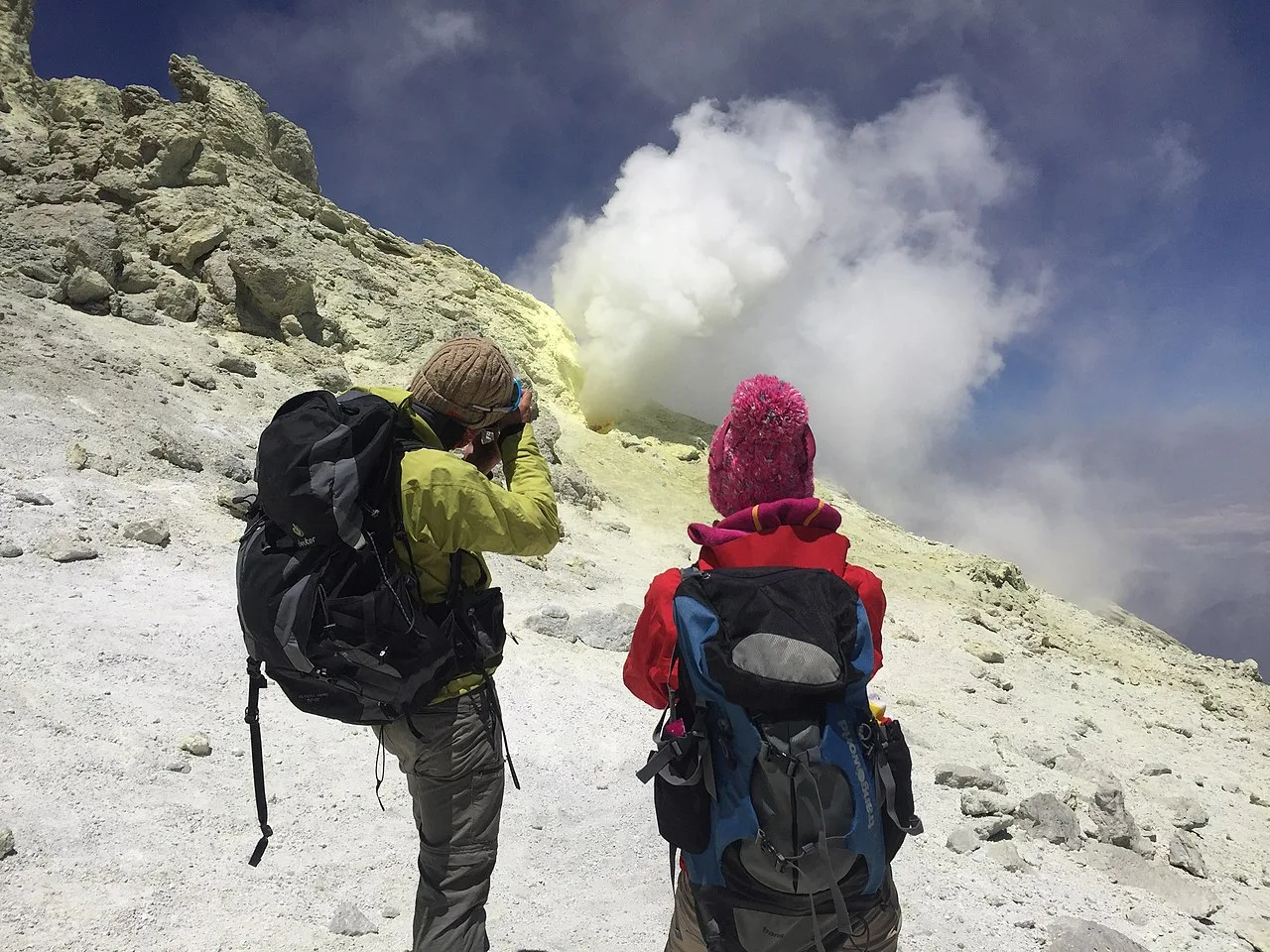
This section passes through beautiful landscapes of lush valleys and steep ravines. From base camp at 4,200 m, summit attempts usually begin around midnight to reach the top for sunrise. Though demanding, with proper training, gear and pacing, the trek is achievable for most reasonably fit hikers.

